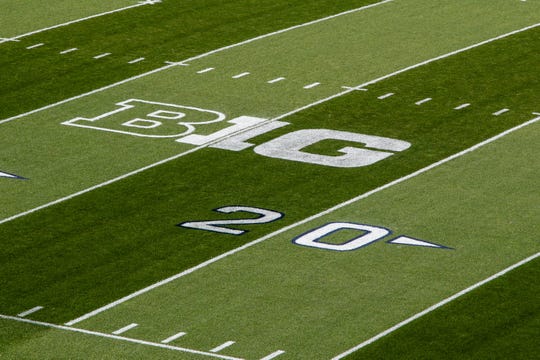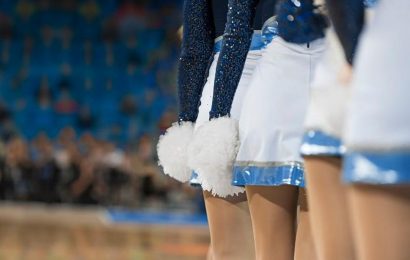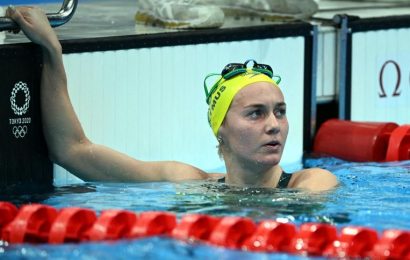The early stages of the COVID-19 pandemic all but halted the Power Five college sports conferences’ seemingly unstoppable revenue growth, new federal tax records show.
After averaging collective annual increases of nearly $252 million over the previous six years, the conferences’ combined revenue rose by less than $11 million in fiscal 2020 and remained just over $2.9 billion. Two of the five saw income declines, and another operated at a modest loss even though its revenue increased.
The conferences other than the Southeastern provided their new returns this week in response to requests from USA TODAY Sports. The SEC made its return public in early February.
The documents provided new information about commissioners’ pre-pandemic pay and their employment statuses. They also revealed fresh insight into the conferences’ total spending on lobbying related to legislation concerning athletes’ ability to make money from their name, image and likeness.
Pay for the Big Ten’s new commissioner, Kevin Warren, was disclosed for the first time on the conference’s new return. Although his biography on the conference’s website says he “officially began his tenure” on Jan. 2, 2020, the return says his start date was Sept. 16, 2019, and he was credited with a total of nearly $1.2 million for the calendar year. Annualized, that’s about $4.1 million.
A general view of the Big Ten logo prior to a game at Beaver Stadium. (Photo: Matthew OHaren, USA TODAY Sports)
The return said Jim Delany remained with the conference through June 30, 2020, and for 2019 he was credited with a total of just more than $8.5 million. That included about $2.8 million as the second full year’s worth of money from the more than $20 million in future bonuses for which he became fully eligible in July 2015 and began receiving in 2017.
The Pac-12’s now-outgoing Larry Scott was credited with a little more than $4.6 million for 2019 — $800,000 less the amount reported for him for 2018.
Scott’s bonus for 2019 was $875,000. That’s $1.325 million less than the one he received in 2018 and his lowest since 2010, his first full calendar year with the conference, when he got $626,000. The conference said Scott’s bonus is tied to growth in media revenues, and in years when new thresholds are met, certain bonuses are higher than in years when a new threshold was not met.
The Big 12’s Bob Bowlsby was credited with $4.4 million in 2019, up by about $350,000 over 2018 due to the vesting of deferred compensation, the conference said. The ACC’s then-commissioner John Swofford was credited with just over $4 million, about $250,000 than he received in 2018.
(Under IRS rules, a non-profit organization must report its revenue and expense data based on its fiscal year, but it must report compensation data based on the calendar year completed during the fiscal year.)
The returns show the full extent of lobbying activities because they require reporting of combined amounts spent on the federal and state levels. In April 2020, USA TODAY Sports cited federal disclosures that showed the Power Five conferences had spent a total of $220,000 on lobbying during the first three months of that year. The tax records show that the conferences combined to spend nearly $1.1 million at the federal and state levels during fiscal years ending in 2020. Only the SEC’s fiscal year ends later than June 30; its fiscal year ends Aug. 31.
The SEC Logo on Craddock Court at The Pavilion at Ole Miss. (Photo: Petre Thomas, USA TODAY Sports)
The SEC and ACC each spent more than $300,000 and reported lobbying at both levels, as did the Pac-12. Spokesmen for the Big Ten and Big 12 said their conferences’ lobbying was at the federal level only.
The revenue numbers on the new returns seem likely to be a precursor to worse figures for fiscal 2021. Playing schedules — and, thus, conference television schedules — in the main revenue-producing sports, football and men’s basketball, were shortened and disrupted throughout the school year.
Recent athletics-department budget presentations to the governing boards of the University of Washington and Washington State each projected revenue decreases of at least 30% in the amounts they will, respectively, receive from Pac-12 Conference revenue-sharing and the NCAA. Pac-12 schools, as a whole, played fewer football games this past season than did schools in other Power Five conferences.
Southeastern Conference schools likely will have increased income from the conference in fiscal 2021, but that’s after the conference announced Wednesday it will give each school a $23 million, one-time supplemental payment being set against future media-rights revenue.
In fiscal 2020:
►The Big Ten reported $768.9 million in revenue, down from 2019 but still about $40 million ahead of the SEC for the top figure. It lowered payouts to its 12 longest-standing members by about $1.3 million per school to $54.3 million. Maryland and Rutgers received smaller amounts, but Maryland’s rose by about $1 million compared to its share for 2019. Both of those schools also received loans from the conference against future shares, as they have in the past.
►The 10-team Big 12 reported $409 million, down by $30 million from 2019. Its payouts ranged from $37 million to $40.5 million, a decline of more than $1 million per school. The conference operated at a slight deficit for the year because of issues related to the pandemic, and it used some of its reserves to keep school payouts from being even lower, a spokesman said.
►The ACC, aided by new income from a conference TV network that launched in August 2019, increased revenue by just over $40 million to nearly $497 million.
Its increased payouts ranged from $30.9 million to $37 million, plus $10.8 million to Notre Dame. Despite the revenue increase, the ACC reported a nearly $3 million annual operating deficit. Conference spokesmen attributed that to the timing of supplemental payments to schools that were made after central-office costs fell mainly due to the cancelation of spring 2020 championships. They said conference reserves were not impacted.
►The Pac-12 reported $533.8 million, a $3 million increase over a year earlier, and averaged payouts of about $33.6 million per school. The payouts were up by about $1.2 million per school, and the conference said about $5 million from its reserves were used to support the per-school increase so it could meet the amount that had been budgeted.
Source: Read Full Article









